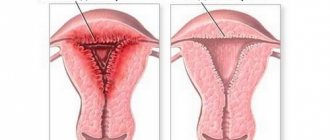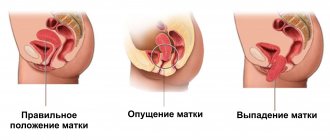Pregnancy is one of the important periods in the life of every woman, however, it does not always end successfully. Today, a frozen pregnancy is considered not such a rare occurrence, which represents a real trauma and tragedy for the family.
A woman has many questions about the cause of this phenomenon, as well as whether a successful birth of a child is possible after a previous miscarriage. This pathology is quite insidious, since its development is possible at any age of a woman and at different stages of pregnancy. In addition to physical illness, a woman also experiences psychological shock, which is why recovery from a missed pregnancy will require some time and patience.
Causes of pathology
In the case when the development of the fetus stops and its death occurs for up to 28 weeks, then they speak of a frozen pregnancy. Most often, this pathological condition is diagnosed in a woman in the first trimester, since during this period there is still no close connection between the developing fetus and the maternal body.
Doctors identify many reasons that underlie the fading of pregnancy. One of them is mutations of the embryo of a genetic nature, that is, even during conception, some genetic disorder occurred, which subsequently created obstacles to the subsequent development of the fetus. This phenomenon may well be observed in healthy parents, however, if they have any genetic disorders, the likelihood of developing a frozen pregnancy increases significantly.
In addition, the reasons for stopping fetal development may be:
- progression of infectious diseases in the parents’ bodies;
- alcohol and smoking abuse;
- severe stressful environment.
One of the main reasons for the fading of pregnancy in the long term is the penetration of dangerous infections such as chickenpox or rubella into the mother’s body.
The fact that the fetus has stopped developing is most often learned from the results of an ultrasound examination or from a spontaneous miscarriage.
Recovery after vacuum cleaning of a frozen pregnancy
If the fetus is dead, it can come out of the body on its own, but most often you have to go through a procedure such as curettage. This process is considered quite painful for a pregnant woman.
A slight temperature (up to 37.4), moderate abdominal pain and dizziness in the first days are considered normal. There is also the possibility that a woman may experience discharge that lasts for several days; there is no need to be alarmed, this is a natural process.
It is worth knowing that a possibly frozen fetus will be sent for study to identify the reasons that led to its death. It is also worth knowing everything about histology, read more here.
If, after cleaning, the discharge is profuse, has an unpleasant odor, or lasts longer than 20 days, you should consult a doctor. Loss of consciousness, severe pain in the lower abdomen and high fever are also symptoms that indicate the need for medical attention.
Recovery after curettage of a frozen pregnancy involves a ban on sexual activity for 3 weeks, a month of refusal to take a bath and visit the pool, as well as the maximum possible refusal of physical activity.
In the period after the procedure, it is necessary to prevent infections, rehabilitate mental health, and normalize the cycle and endometrium.
Vacuum aspiration is a more comfortable and safe alternative to surgical curettage.
Its advantages:
- Minimizing the risk of cervical injury;
- Short duration and low complexity;
- Faster recovery period.
Despite the fact that this procedure is easier to tolerate than curettage, after its implementation there is also a recovery period, the conditions of which are similar to the rules of behavior after surgical cleansing, but the terms of restrictions are less. For example, it is recommended not to have sexual intercourse after vacuum aspiration for 2 weeks (for surgery - 3).
At the moment, such cleaning is the most effective, but even after it it is necessary to do an ultrasound examination to make sure that all particles of the fertilized egg have been removed from the uterus.
Medical cleansing is carried out in order to remove the dead embryo from the uterus. If this is not done, the decomposition of the tissues of the dead fetus will cause a local inflammatory reaction and also provoke general intoxication of the body. Depending on the period at which developmental arrest occurred, doctors can choose one of the removal methods.
Vacuum aspiration
Using a special instrument, the cervix is opened slightly, an extractor is inserted into the organ and its contents are sucked out. The operation is performed under local or general anesthesia. The uterine epithelium is minimally damaged during the procedure, and bleeding after such an intervention does not last long (1-3 days). Vacuum aspiration is done for freezing for up to 8 weeks.
Scraping
Therapeutic curettage is performed under local or general anesthesia (the type of anesthesia is determined by the doctor after clinical and laboratory tests in preparation for the operation). The uterine endometrium is cleaned using special instruments.
This surgical intervention, even carefully performed by an experienced doctor, is traumatic for the female reproductive system. The recovery process after it will take a long time, and spotting with this type of treatment can last 2-3 weeks.
Artificial birth
At a period of 18-28 weeks, labor is artificially stimulated with the help of medications, and after the dead fetus is delivered, curettage is performed as described above.
After removal from the uterus, the dead embryo is sent for a histological examination to identify the causes of developmental arrest.
After removal of the frozen fetus, the woman must undergo a control ultrasound.
Physiological recovery after failure
The result of fading pregnancy is a miscarriage or surgical curettage of the uterus, which causes great trauma to the psychological and physical state of the woman. The best option in such a situation is considered to be a spontaneous miscarriage, because this is how the body independently gets rid of a fetus that is incapable of further existence. In the case when a decision is made to perform curettage, this is a traumatic procedure, during which there is an invasion of the cervix and its internal cavity.
It will take some time to recover from a failed pregnancy. Many experts recommend starting to plan a subsequent pregnancy three months after this unpleasant event, and this period is the minimum. The best option is a time period of 6-12 months, which should pass after a miscarriage or a curettage procedure.
After surgery, the uterus is a scarred surface that will take about six months to heal. After this period has expired, it is recommended to visit your doctor, who will assess the general condition of the uterus and give recommendations for subsequent pregnancy planning.
Restoration of the menstrual cycle
Another important point is the restoration of the cycle after a frozen pregnancy, that is, the normalization of the process of ovulation and menstruation. There are situations when the cycle manages to recover within a month after an unpleasant event and the woman successfully conceives in the next month.
However, a fairly common occurrence is a hormonal imbalance in the body, which manifests itself in menstrual irregularities, and it is the hormonal imbalance that subsequently becomes the cause of miscarriage. Disruption of menstruation after pregnancy fading is quite understandably explained by the stressful environment that the female body has experienced. After all, with the fertilization of the egg and the onset of pregnancy, a complete restructuring of the woman’s body occurs to carry a baby. Fading pregnancy is a kind of shock that takes some time to overcome.
The decision on how to restore the menstrual cycle is best made together with your doctor. It is allowed to begin sexual activity after curettage 14-16 days after it is performed.
Treatment and contraceptives after frozen pregnancy
Experts strongly recommend abstaining from sexual intercourse for at least 2 weeks, if the period was short and it all ended in a miscarriage. Afterwards, bleeding continues for an average of 14 days. If there was a curettage, you must abstain from sex for a month so that the cervix closes and its inner surface heals. After this time, doctors often prescribe hormonal contraceptives to their patients - they help the body cope with hormonal imbalance. Usually these are combined oral contraceptives with low doses of estrogen and progestogen, in particular Yarina, Regulon, Jess Plus, Zhannine, Novinet. All of them suppress ovulation, changing the cervical mucus so that it becomes impenetrable to sperm. Oral contraceptives have a number of contraindications. These are thrombosis, stroke, angina pectoris, diabetes mellitus, epilepsy, hepatitis, migraines, liver failure, severe depression, venous embolism. They should not be taken if you have cholelithiasis, smoking, breast tumors, or over the age of 35. You also need to know about the side effects of such drugs. These are mood swings, nausea, migraines, weight gain, thromboembolism, allergic reactions.
Often, attending physicians prescribe Duphaston or Utrozhestan to patients - these drugs also restore hormonal balance.
The World Health Organization (WHO) recommends that women abstain from a new pregnancy for six months after a miscarriage. Although many researchers claim that there is no danger in its earlier onset, for example, after 3-4 months. Still, it is worth listening to WHO recommendations. For six months, it is very important to lead a healthy lifestyle, monitor your diet every day, taking care of the proper intake of vitamins, losing weight if necessary, daily exposure to fresh air, and positive emotions. Be sure to take vitamins C, E, B6.
If a woman has experienced a miscarriage very emotionally and painfully, then it is advisable to consult a psychologist or psychotherapist.
A subconscious fear of repeating a past scenario can be an obstacle even to getting pregnant. Therefore, it is important to leave the negative in the past, to believe that bad things will not happen. According to statistics, 80-90% of women, after a frozen pregnancy and following medical recommendations, carry and give birth to healthy babies.
Tests after pregnancy loss
First of all, when fetal development stops, it is necessary to find out the cause of this pathological state of the body.
To do this, a woman is recommended to undergo a number of studies:
- analysis for the detection of infectious diseases that are predominantly sexually transmitted;
- blood test to determine hormone levels;
- Ultrasound of the uterus;
- carrying out a chromosomal analysis, which makes it possible to ensure that the parents do not have genetic disorders, which often cause miscarriage;
- consultation with a doctor - genetics;
- histological examination of fetal tissue obtained after curettage.
Based on the results obtained, a conclusion is made about the possible timing of pregnancy planning, as well as treatment if necessary.
Psychological rehabilitation
Of course, stopping the development of the fetus in the early stages of development is a real tragedy for the family, however, you should not dwell on it. First of all, you need to concentrate on recovering from the experience, because there is always a chance to give birth to a healthy child.
It is necessary to return to your normal life as soon as possible and do your favorite things, which will help take your mind off unpleasant thoughts. For some women, a psychological barrier is created, which is associated with the fact that they have a fear of a subsequent pregnancy. However, after completing the prescribed studies and receiving a positive result, you can discard all unpleasant thoughts and confidently begin planning.
Maintaining a healthy lifestyle, creating a positive family environment and following the advice of your doctor is considered one of the ways to prevent the development of various complications while expecting a baby. A frozen pregnancy is not a death sentence, because after it many married couples become happy parents.
About fetal freezing
The reasons for the cessation of embryo development are not precisely determined. Sometimes the culprits are:
- Uncontrolled use of medications;
- Infections;
- Harmful addictions;
- Nervous shocks.
But even those women whose pregnancy proceeds without such negative accompaniment are not immune from pregnancy fading.
It is not always possible to detect a problem immediately and on your own. An important point that may interest women is whether menstruation can occur during a frozen pregnancy. Everyone knows that one of the signs of its normal course is precisely their absence.
Freezing of the fetus means that it no longer requires nutrition. The membranes do not release hCG, that is, the mother’s body receives a signal about this. Normal embryo development is supported by the hormone progesterone. Now its volume decreases, which causes partial rejection of the endometrium. Frozen pregnancy and spotting or more severe discharge with paroxysmal pain is a common combination. Based on this sign, one can suspect an unfavorable development of the condition, especially if there are:
- Abrupt disappearance of toxicosis;
- Return to the previous appearance and condition of the mammary glands;
- Decrease in basal temperature.
What to do?
There is no way to push an embryo towards normal development. It is necessary to get rid of it and restore the woman’s health. Her chances of becoming a mother in the future are no less, but rehabilitation takes time.
Keeping in mind the discharge that occurs when the development of the fetus stops, women worry whether a frozen pregnancy can come out with menstruation. This is very likely, especially at an early stage. The woman may not be aware of her situation, and a late menstruation will be nothing more than a miscarriage.
Some doctors, having made a diagnosis, wait until the patient’s body copes with it on its own. But even if a woman is sure that the miscarriage was complete and her uterus rejected the frozen fetus, monitoring this with an ultrasound is still necessary.
In most such cases, curettage is performed, and after a couple of weeks an ultrasound examination is performed to monitor the condition. After surgery, antibiotic therapy and hormonal agents are often prescribed.
It is not surprising that menstruation after curettage of a frozen pregnancy may proceed differently than before. There are many external and internal reasons influencing this.
We recommend reading the article about menstruation after a miscarriage. You will learn about the beginning of menstruation, the nature of discharge, and the normalization of the menstrual cycle after an unsuccessful pregnancy.











